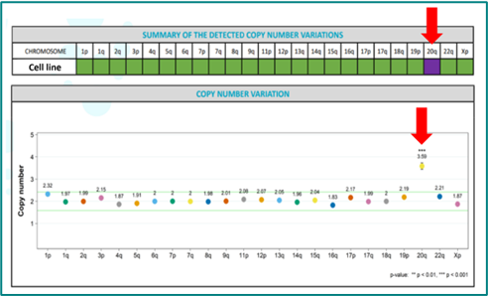RESCUE iPSCs – peace of mind for
iPSC scientists
Historically discovering an iPSC line has lost its genetic integrity has been a significant blow to researchers.
With Cellected’s RESCUE service, if a genomic anomaly is discovered – either via RIQUEST or by researchers themselves – Cellected can RESCUE the cell line, allowing you to continue your project with minimal disruption.

RIQUEST & RESCUE: solution for iPSC genetic integrity QC
Frequent testing and QC of iPSC lines – as mandated by the ISSCR Standards – should not be a cause for concern.
Cellected’s novel services enhance iPSC quality through monitoring and most importantly, recovering cells if there is a genomic abnormality or genetic heterogeneity. This is key for anyone working with iPSCs, be it multi-gene editing, drug discovery or organoid research.

RESCUE from Cellected
Cellected’s RESCUE service comprises 4 key elements – which are fully documented and have been designed mindful of the ISSCR Standards
01
Single cell
cloning / seeding
The use of specialist, automated single cell cloning technology from Advanced Instruments enables the generation of large numbers of iPSC clones.
02
Growth & Morphology
The resultant iPSC clones are selected for optimal growth and morphology characteristics using proprietary AI-based analytics.
03
RIQUEST
– in process QC
The selected iPSC clones are rapidly analysed and selected for quality and stability, per Cellected’s RIQUEST service.
04
cRyopreservation
/ CHARACTERISATION
The selected clones are cryopreserved and fully QC-ed before shipment.
Additional characterisation assays (e.g. NGS, SNP, differentiation, pluripotency, genotyping) are also available.
What RESCUE gives the client
- High quality, recovered iPSC clones without genetic abnormality
- Precious, high-value cell lines no longer need to be disposed of in clinical waste
- The ability to continue their high-value research with minimal disruption and improved reliability, reproducibility and data consistency
In the event that the iPSC cell line is non-mosaic – i.e. 100% of the cell population contains the genomic abnormality – then contact us, as we can help you evaluate earlier passages and banks, and work from these to RESCUE the cell line
